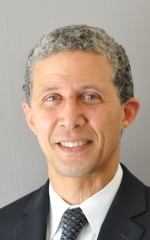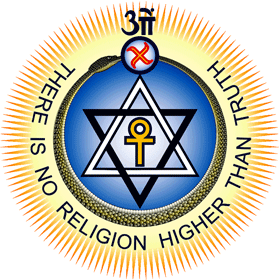October 2017 Newsletter
The following articles are reproduced from the October 2017 Newsletter to members. Non-members may or may not be able to relate to the contents.
Annie Besant - Her Life and Mission
By Radha Burnier
Dr Annie Besant was described as a yogi by Pandit Madan Mohan Malaviya, even though he did not entirely approve of her eclectic approach to national problems. Earlier, during the period of her work with the Socialists of England, Bernard Shaw declared that there was no woman orator equal to Annie Besant. The impact of her oratory was not just the result of her exceptional eloquence and the silvery tone of voice for which she was famous. Her lectures were special, because many in her audience felt uplifted by the power which flowed through her, and which made them feel at their moral and spiritual best.
She was a great organizer with extraordinary energy. At the same time she was deeply religious in a large-hearted and profound sense. Her intellectual attainments were also noteworthy. Therefore one could say without exaggeration that her life was an example of karma, bhakti and jńâna yoga, a life of utter selflessness dedicated to the welfare of others.
On 16 November 1893, when she set foot on the soil of India for the first time, she did not come as a stranger. She had addressed large audiences all over Britain about the oppression which colonized people had to endure. Her pamphlet entitled England, India and Afghanistan had been widely circulated. Thus she came here as a devotee of Indian philosophy and a champion of her people.
In 1895 she settled down in Varanasi and began to delve into India’s philosophies and sacred lore. She adopted the simple Indian way of life, sitting cross-legged, living among Indians as one of them. Very soon she translated the Bhagavadgitâ, having sufficiently mastered Sanskrit.
She delivered numerous lectures all over India on the deeper truths of the great religions. She stressed the need to be religious without being sectarian, to love one’s faith without decrying those of others. “Make religion a unifying force, not a separative one,” she taught.
I make no apology here for the variety of religious beliefs, for I assert that in that variety lies their greatest value to men. Men are of different temperaments, of different lines of thought. Would you have religion one in its forms as well as one in its essence? Then tell the sun to send out but a single ray of colour; and make all the varied world one colour.
Today’s India would benefit immensely from her advice to its people about religion. Her words on the brotherhood of religions are worthy of very wide circulation as a means to combat present-day fundamentalism, fanaticism, and selfishness parading as religion.
Dr Besant also saw that Indian youth needed an education suited to their culture. The educational system at that time was organized to produce clerks and subordinates for the British. She decided to restore self-respect, to build character, and provide to the young, clear concepts of good citizenship. Hence, she founded the famous Central Hindu College and Schools in Benares, keeping them free of control by the British rulers. The institutions grew into national celebrity. Several princes came forward with support and eager young men threw up their jobs to teach. She herself inspired the students by talks about ancient Indian ideals, and taught them to be gentlemen. She was against using young people in politics. The young must learn to think and understand before acting, she said. At the same time she saw to it that her students were trained to take part in the national life.
Her Central Hindu College and Schools (one for boys and one for girls) were provided with beautiful grounds and buildings, but when Pandit Mâlaviya proposed to start the Banaras Hindu University, she gave it all away with her usual magnanimity. Then she turned her energy to opening a series of national schools all over India. She declared:
Our work is the training of thousands of India’s sons into noble manhood, into worthiness to become free citizens in a free land. Some of you imagine that freedom is to be won by loud talking, by violent speeches, by noisy demonstrations, by tumultuous processions through the streets. I tell you that Liberty is too lofty and too divine a goddess to descend into a country until purity of heart, noble living, self-sacrifice, discipline, and self-control have made of the citizens a throne on which she may sit and reign.
So successfully were the young boys and girls in her institutions trained into a sense of responsibility and of public duty that even under stressful circumstances there never was any indiscipline or trouble in any of them.
Side by side with educational work, Dr Besant engaged in activities for reform of the social structure. She spoke throughout India against superstitious beliefs and outmoded customs like caste, child marriage, forced widowhood, the ill-treatment of the depressed classes, and cruelty to animals. These talks were published under the title Wake Up India. Many pledged themselves to abandon undesirable customs, and work for reform. The practice of consuming only India-made goods (swadeshi) was also part of the programme. Thus, the way was paved for political action.
In 1916 Dr Besant launched the Home Rule Movement, and branches of the Home Rule League were established so widely that the consciousness of even the rural people was awakened to the need for independence. This led Gandhiji to remark: “It is Dr Besant who has awakened India from her deep slumber and I pray that she may live long to witness a free India.” At that time, when other leaders were hesitant, she demanded of the rulers nothing less than full self-government. The communities were divided, but she got them together for unified action. Yet she was insistent about using only constitutional means to achieve freedom. She knew, by her long experience in social and political work in England, how dangerous it is to teach the masses to flout the law. She warned: “ls Home Rule to be achieved only to find a country which is in condition of anarchy, resistant of all disciplines, defiant of all authority, where everyone is a law unto himself?” Unfortunately, her advice against using unconstitutional means was not accepted and today we suffer from the conditions she anticipated.
A powerful instrument of political action and reform was the daily newspaper New India, which she owned and edited for fifteen years from 1914 onwards. Though the government penalized her again and again for her trenchant articles, she was undaunted. The British government was alarmed by the impact of her campaigns, and so they interned her in Ootacamund for a few months. The result of this imprudent decision was that when she was released, public enthusiasm was redoubled and she was elected President of the Indian National Congress in 1917, to which office she gave a new dimension by being active throughout the year, instead of for three days only.
But popularity did not last, for she opposed civil disobedience, as it meant teaching people to break the law. However, she never feared unpopularity. Undaunted she continued to do her best, in spite of advancing age. A National Conference organized by her culminated in drafting the Commonwealth of India Bill, which envisaged a graded system of suffrage and also a system of qualifications and disqualifications for holding public office. The nation did not support this effort, but the Bill reached the British Parliament and had a reading. Undoubtedly our country would have benefited immensely if some of the concepts of that Bill had been incorporated into the Indian Constitution. Sadly, today there is nothing to prevent even people with criminal records from holding high office.
Dr Besant’s great work was in many fields: the Scout Movement, the Indian Women’s Association, the Labour Movement, the Young Men’s Indian Association, and other institutions were either started or inspired by her. But we must not forget that her mission was not confined to India. She was a world-renowned personality. In 1893, when the first Parliament of World Religions was held in Chicago, she was one of its outstanding figures. Even a hall seating 3,000 was not enough for the crowd which came to hear her speak on “The Supreme Duty”.
In 1907, Dr Besant was elected as the President of the Theosophical Society. She travelled to every part of the world, was revered as a spiritual guide. She nurtured several outstanding figures, none more striking than J. Krishnamurti, who was to prove that her prophetic insight about his future was justified.
The keynote of Annie Besant’s life and mission can be summed up in two words: Truth and Love. She wrote: “An imperious necessity forces me to speak the truth as I see it, whether the speech please or displease, whether it bring praise or blame.”
The other side of her nature was Love. Few know how many of the poor she benefited, how many hundreds of students she educated. If the world were blessed with a few Annie Besants there would be hope of swift progress towards a golden era. The following words represent the spirit that was hers:
When those who have, are ready to sacrifice, then the dawning of the new era will be seen in the sky that is over our earth; when wealth and education and power are held as trust for the common good, ah! Then will come the laying of the foundations of a better and nobler State. When the educated man and woman remember: “This education of mine, bought by the ignorance of thousands who have laboured in order that I might be educated, really belongs to them, and I must give it back to them in service, in order to pay the debt that l have contracted to them”; when the wealthy man feels: “I am a steward, not an owner of this wealth which has come out of the labour of thousands; let it help the uplifting of thousands” — then Brotherhood is beginning to show itself upon earth.
Mrs Radha Burnier was the seventh international President of the Theosophical Society (1980–2013). Reprinted from The Indian Theosophist, November–December 1993 in memory of Annie Besant who was born 170 years ago on 1 October 1847.
Come and Meet Our International President

Our International President, Bro. Tim Boyd, is coming to meet members of the Singapore Lodge Theosophical Society on 21 October 2017 at 4 p.m.
Bro. Tim Boyd was elected the Eighth International President and took office on White Lotus Day, the 8th of May 2014.
Bro. Tim Boyd last visited us in January 2015. His first visit was in August 2005 and this will be his fifth visit to SLTS. He will give us a talk on The Importance of the Center.
“In geometric figures, gravitational patterns, conscious life forms, and human social and political structures the center and centering are of vital importance. Unfoldment of deeper potentials of consciousness depend on our ability to be aware of, then function through progressively more refined "centers" within us. The Ageless Wisdom tradition gives guidance in this process.”
